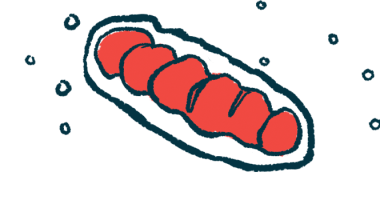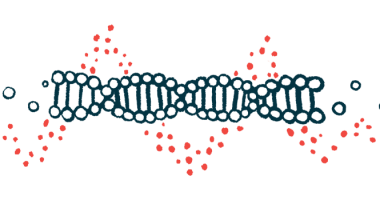New SCO2 Mutation Strengthens Gene’s Link to Rare CMT Type

A new SCO2 gene mutation was identified in two brothers with Charcot-Marie-Tooth disease (CMT), and likely causes symptoms by disrupting the function of the mitochondria — the cell’s powerhouses — according to a recent case report.
The mutation is one of the few described in SCO2 to be associated with CMT, the researchers noted.
“Our combined data strengthen the concept of SCO2 being causative for a very rare form of axonal neuropathy [i.e. CMT], expand its molecular genetic spectrum and provide first biochemical insights into the underlying pathophysiology [disease mechanisms],” the researchers wrote.
The report, “Identification of a novel homozygous synthesis of cytochrome c oxidase 2 variant in siblings with early-onset axonal Charcot-Marie-Tooth disease,” was published in Human Mutation.
SCO2, through the protein of the same name it codes for, plays a role in transporting copper to cytochrome c oxidase (COX), an enzyme involved in energy production within the mitochondria. Mutations in SCO2 have been described in the context of COX deficiency and cardiomyopathy, a serious condition characterized by cardiac and brain abnormalities in infants.
A previous study identified SCO2 mutations in two unrelated patients with CMT type 4 (CMT4), a rare type, who had peripheral axonal neuropathy, or damage to the nerve cell projections residing outside the brain and spinal cord (peripheral nerves).
In the present study, the researchers described two cases of CMT4 associated with SCO2 mutations in brothers from Afghanistan who were seen by clinicians at the University Hospital Essen, Germany. The report marks the fifth and sixth cases of SCO2 mutations in patients with damage affecting nerves that control movement.
The first brother’s symptoms included frequent falls, walking abnormalities, and muscle wasting at age 9. Throughout childhood, his parents reported additional muscle loss, hand weakness and tremors, difficulty walking without help, joint stiffness, and poor fine motor skills by age 12.
In the clinic, the boy had severely abnormal impulses in his peripheral nerves and alterations to the brain’s white matter, which is consistent with a loss of myelin, the protective coating surrounding nerves. At nearly 14, his muscular strength again worsened, with severe muscle loss observed. He scored 13 out of 28 points on a CMT neuropathy test, indicating moderate neuropathy.
Beginning at age 2, the second brother experienced motor and mild speech delays, leg shaking during exercise, difficulty climbing stairs, and hand tremors. At age 4, he fell frequently and could not climb stairs, jump, or eat without help. Similar to his brother, this boy had abnormal nerve impulses that suggested peripheral neuropathy.
A final clinical examination at age 5 revealed hand tremors, unstable balance, and ankle rigidity. The boy’s muscle strength and tone were normal, and he had milder neuropathy symptoms (three out of 28 points) than his brother. The overall intelligence quotient (IQ) was below average at 50. A normal range is 85 to 115.
Genetic testing revealed that the brothers had the same SCO2 mutation (c.361G > C). The mutation was homozygous, meaning they had each inherited two copies of the mutation, one from each biological parent. Both parents and two other siblings each had only one copy of the mutation and were all healthy.
An examination of their white blood cells showed the boys had significantly increased SCO2 protein levels, compared with their father, and decreased levels of mitochondrial proteins, including MFN2. MFN2 gene mutations are associated with CMT type 2A, a more common form of axonal CMT.
Overall, production of 61 proteins was altered in the boys’ white blood cells compared with their healthy family members. Many of those with decreased levels were related to mitochondrial function. Levels of six COX subunits were also decreased.
The results suggest “a greater impact of the [mutation] on mitochondrial protein composition and most likely function,” the researchers wrote.
While copper supplementation (copper histidine) has been used previously as a treatment, results were variable. This, along with normal copper levels in blood and urine made the physicians not recommend the treatment for the boys, and the parents agreed.
“To conclude, our data expand the [symptom] spectrum of SCO2-associated mutations by adding the fifth and sixth patient with the rare phenotype [observable characteristic] of axonal polyneuropathy, describing intellectual disability as part of the disease for the first time,” the researchers wrote.
“Further investigations of copper metabolism and the development of polyneuropathy are necessary to evaluate the option of a treatment with copper histidine for these patients,” they added.







